Outdoor living is a lifestyle in the Sunshine State, Florida. From outdoor entertaining to backyard barbeques or enjoying a relaxing moment of quiet solitude. You’ll need high-quality, durable outdoor furniture that can keep up with your lifestyle, blazing sun, and coastal climate.
The best materials for outdoor furniture in Florida include synthetic resin wicker, teak wood, cast aluminum, stainless steel, and composite wood. These materials are all durable, low-maintenance, weather-resistant, and hold up well in Florida’s hot and humid climate.
When choosing the best materials for outdoor furniture, you’ll want to consider comfort, style, longevity, and, of course, Florida’s hot and humid climate. Let’s scroll through the best materials and their advantages.
Best Material for Outdoor Furniture in Florida + Advantages
Florida – the Sunshine State – is beloved for its long, hot, and particularly humid summers and short, mild winters.
Outdoor furniture needs to be made from high-quality, durable material that can withstand the sweltering heat and humidity levels. Here are the top materials for outdoor furniture in Florida and their advantages.
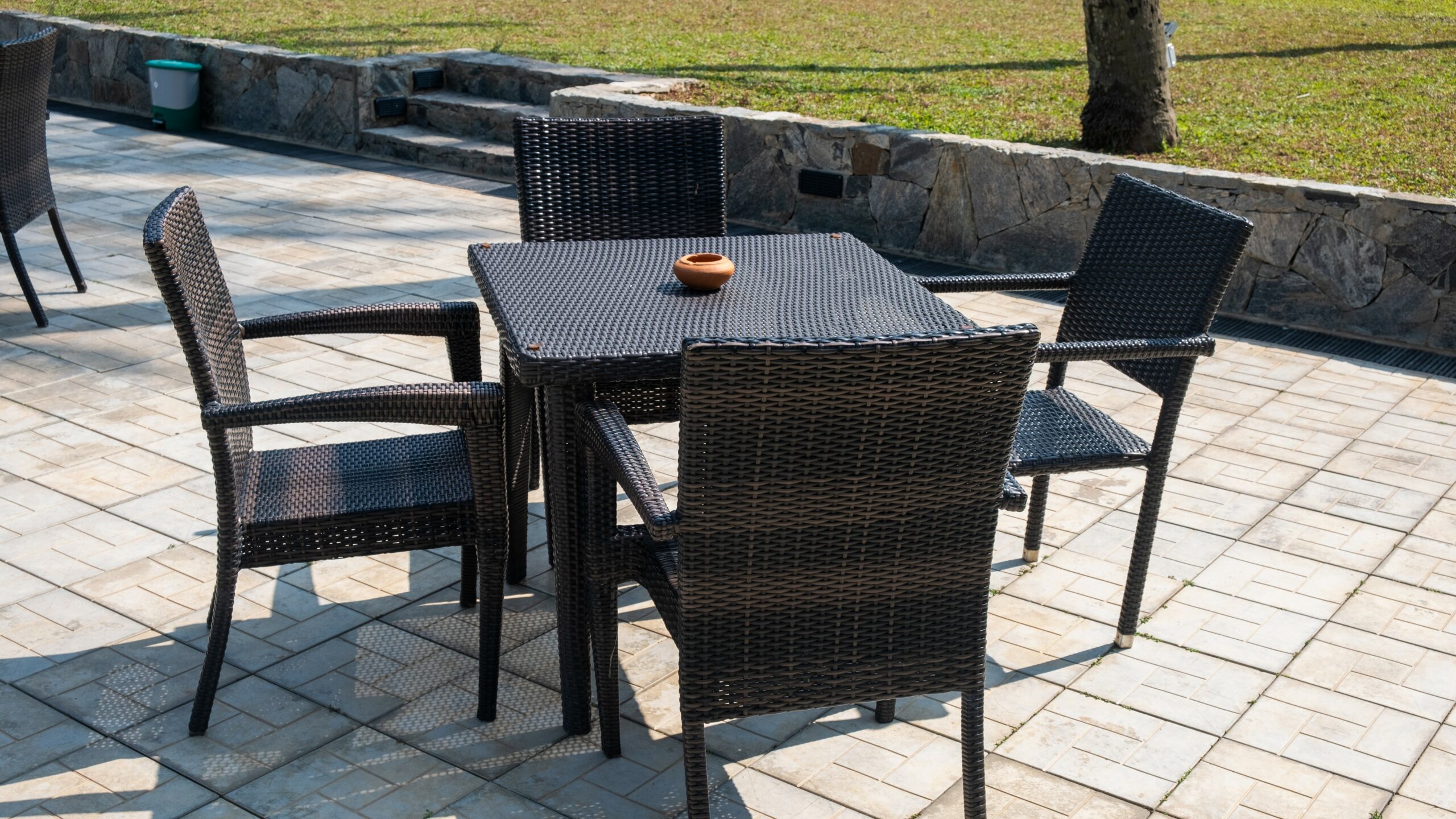
Synthetic Resin Wicker
Synthetic resin wicker is a weather-resistant material often wrapped over aluminum frames to create lightweight, durable, all-weather tolerant outdoor furniture, perfect for Florida. While natural materials like rattan are traditionally used to create outdoor wicker furniture, the term “wicker” simply refers to a weaving style used to make furniture, not the material used.
Natural wicker furniture is made from plant fibers like rattan, bamboo, or seagrass. In contrast, synthetic resin wicker is made from polyethylene fibers. Resin wicker furniture looks remarkably like natural wicker but is longer-lasting, more resistant to sun and water damage, and requires minimal maintenance.
You can enjoy synthetic resin wicker furniture for years without worrying about it deteriorating quickly. You will need to hose it down occasionally and may have to occasionally replace bent or broken reeds.
Ensure you purchase High-Density Polyethylene (HDPE) Wicker instead of low-quality PVC wicker furniture that might unravel, turn brittle, and crack.
Advantages of Resin Wicker Furniture:
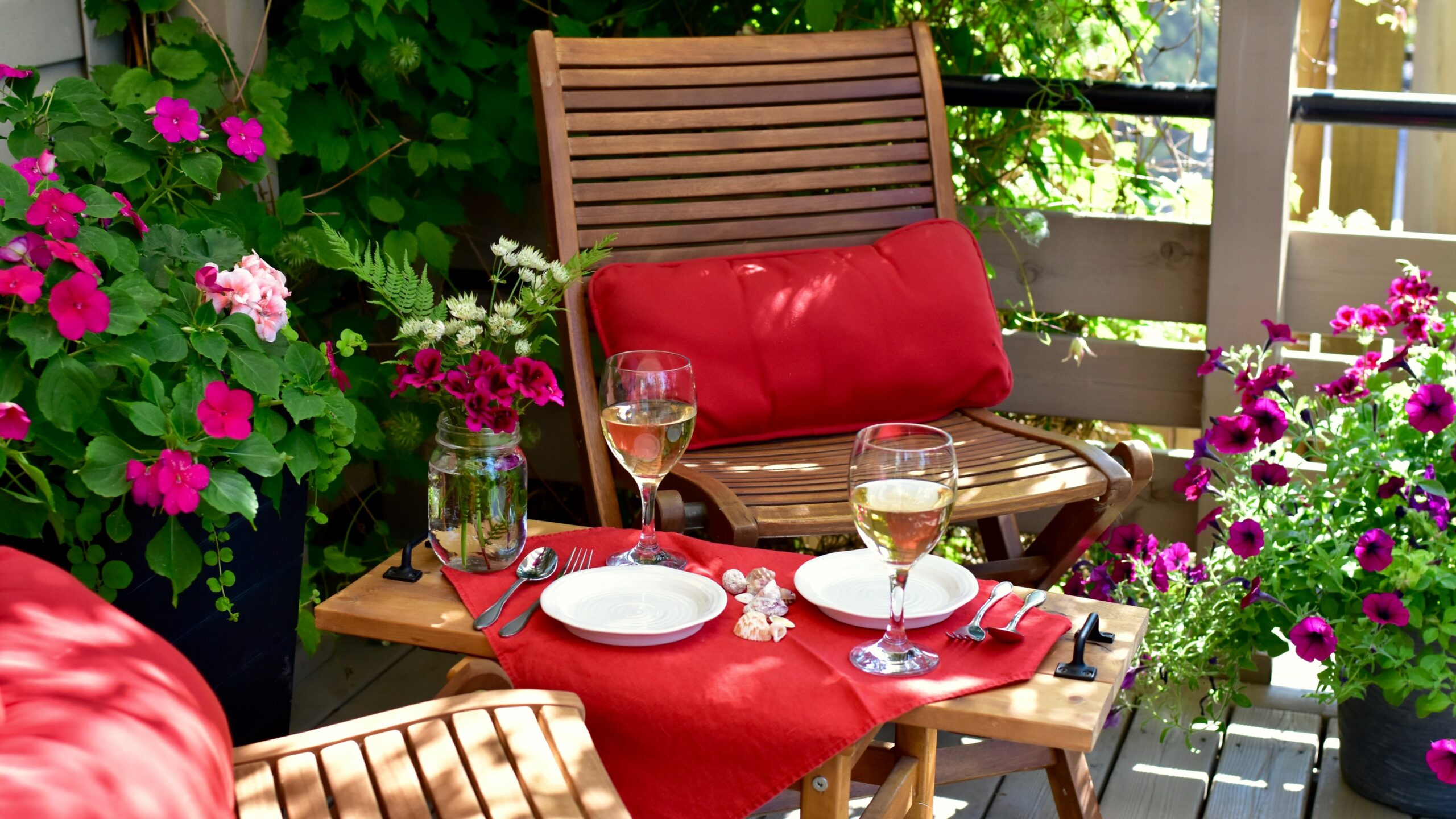
Teak
Teak is the most popular hardwood timber used to create long-lasting outdoor furniture. It is touted for its gorgeous smooth grain finish and all-weather tolerance. However, teak’s high demand and limited availability have pushed this fine-grained hardwood’s price through the roof.
Florida has an average humidity of 74%, which can lead to rotting and mildew in porous wood furniture. Using a hardwood like teak eliminates these issues. Teak doesn’t warp, crack or turn brittle like many other wood varieties. It is naturally high in silica and natural oils, making it virtually impervious to rotting, swelling, and insect damage, even when left untreated. Teak furniture can last up to 50 years!
New teak furniture has a natural honey-brown color that fades to a beautiful silvery-gray patina. Many homeowners prefer the gray hue, but you can easily return the wood color to its former glory by lightly sanding and sealing it with a teak sealer.
Advantages of Teak Furniture:
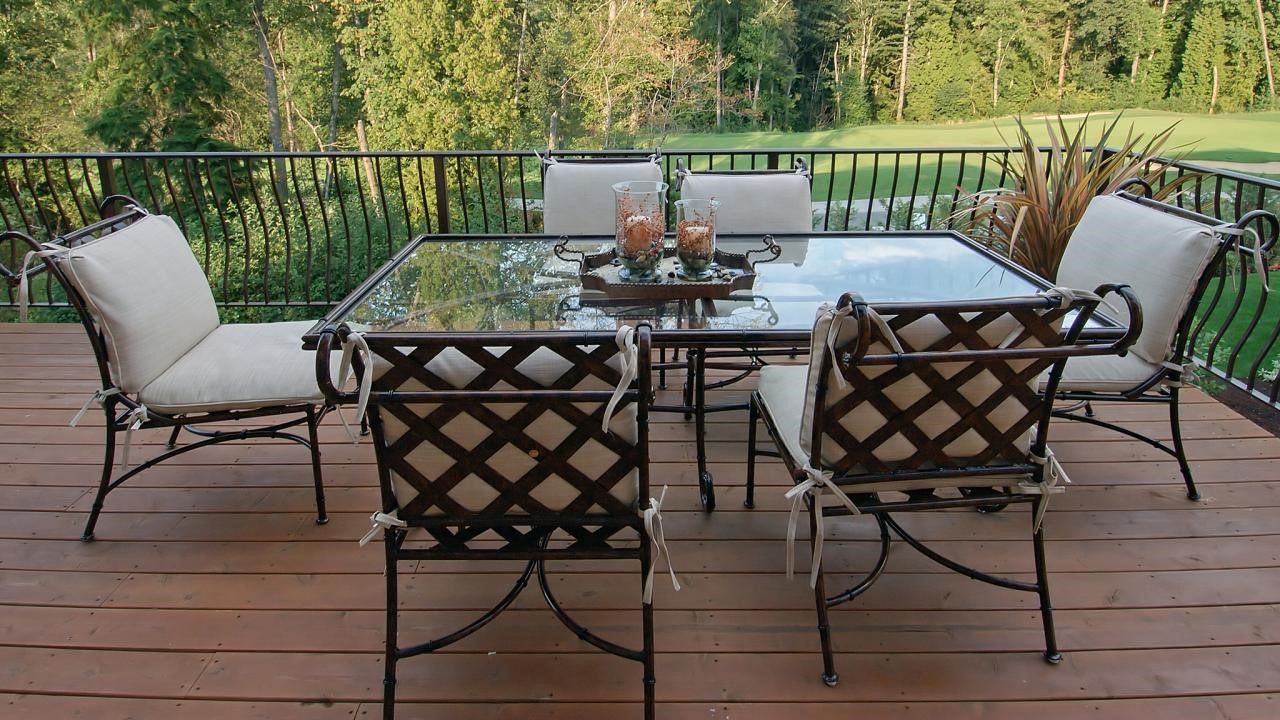
Cast Aluminum
Cast aluminum outdoor furniture offers a combination of style, affordability, and durability, making it ideal for your Florida home. While standard extruded aluminum furniture is shaped and welded together at the joints, cast aluminum is melted and poured into a mold.
Although more pricey, cast aluminum is more robust, solid, and heavier than extruded aluminum. It is also less maintenance as cast aluminum is poured into a sand mold, ensuring there aren’t any gaps that water and dirt can get into, unlike the creases and welded areas of extruded aluminum.
Cast aluminum is heat resistant, making it perfect for hot summer weather. It won’t warp, buckle up, or fade in the heat. Although lightweight, it is a strong material resistant to rust and adverse weather conditions. Cast aluminum is easy to maintain and only needs occasional wiping down.
Cast aluminum’s lightweight characteristics make it ideal for outdoor dining chairs, as you can easily move them in and out during seating.
Advantages of Cast Aluminum Furniture:
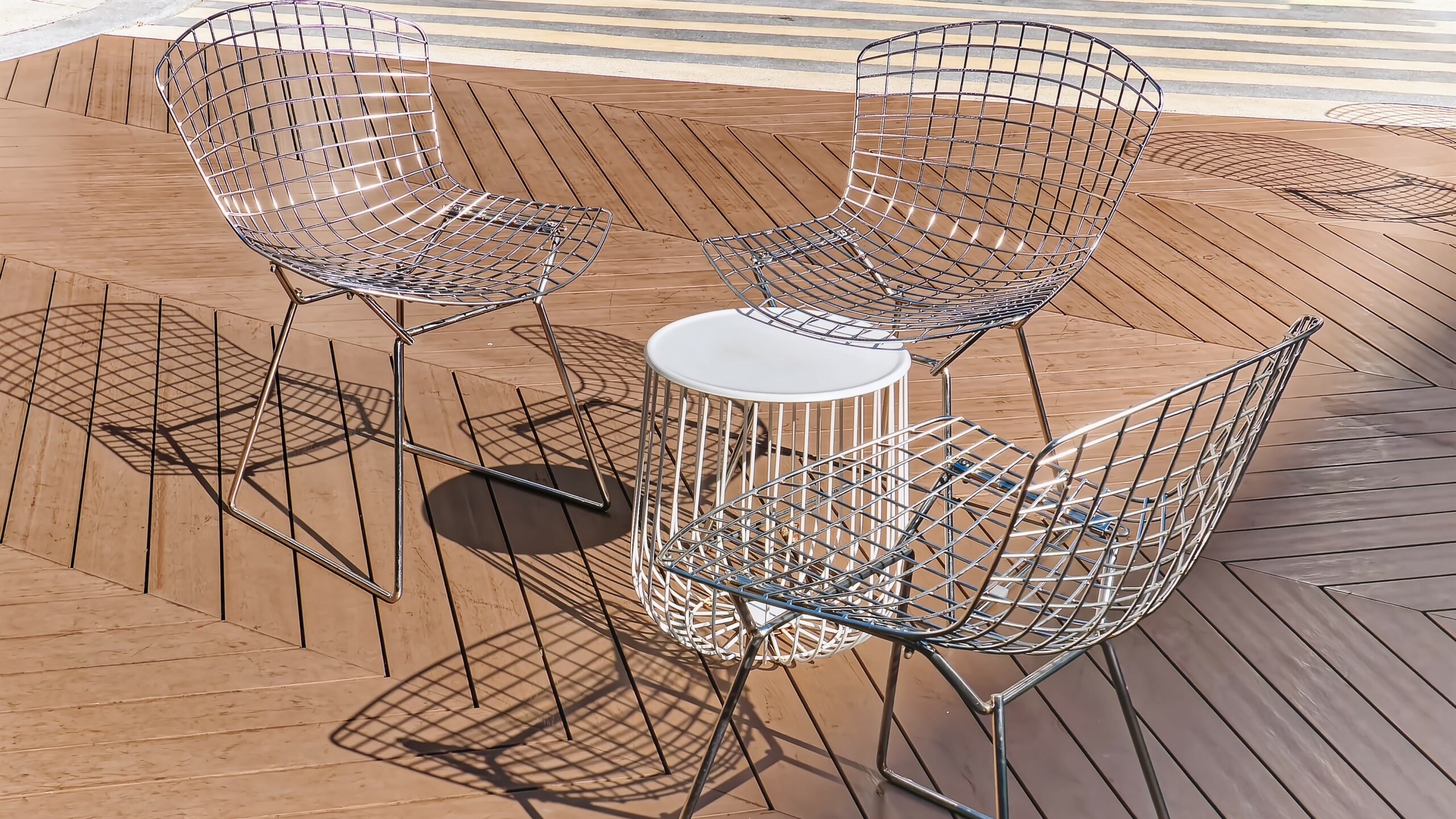
Stainless Steel
Stainless steel is a sturdy, extremely strong metal alloy ideal for large weight-bearing outdoor furniture like dining tables, sofas, or sectionals. It is often made with recycled metals, making it an environmentally responsible choice.
It is rust and wind-resistant; it won’t tip over or blow away in harsh winds, and its high density prevents dents and damage from frequent use. While resistant to rust and corrosion, it’s advisable to purchase stainless steel furniture with a powder coating for added resistance in coastal areas like Florida, where salty air is present.
Stainless steel is ideal for high-end, modern outdoor furniture thanks to its chic metallic finish. It is easy to clean and maintain. The only downside is that it retains heat, making the furniture hot to the touch in the summer heat (stainless steel still ensures extreme temperatures better than most metals).
Advantages of Stainless Steel Furniture:
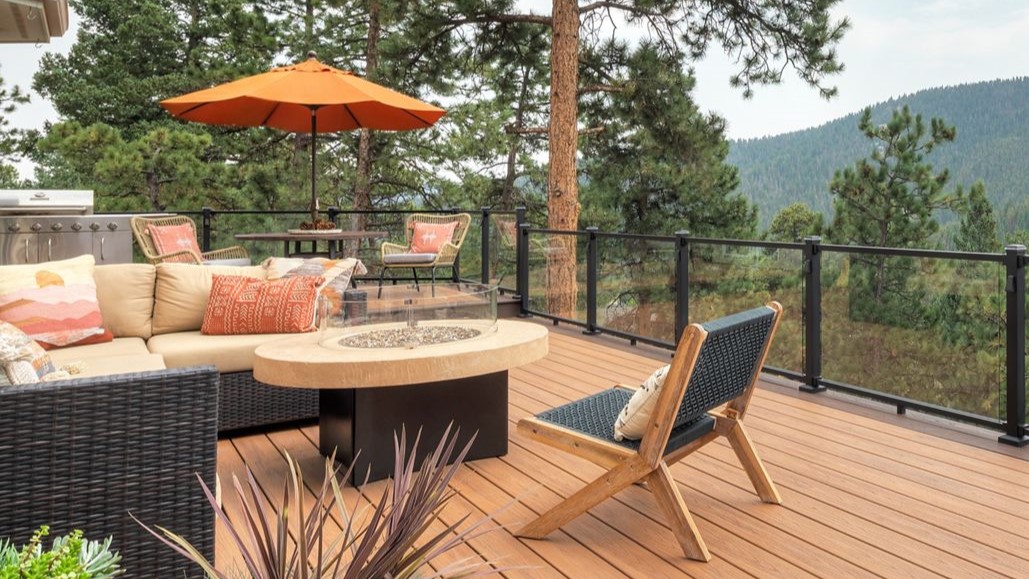
Composite Wood/Polywood
Wood Plastic Composite or Polywood is made from a composite material of wood fibers and a thermoplastic like HDPE, PVC, or PET. HDPE is mainly used to make all-weather outdoor furniture thanks to its natural water resistance and durability.
In earlier days, composite wood furniture had a bad rep for looking artificial and plastic; today, modern composite pieces are more natural and stylish with a smooth, waxy hand-feel.
The combo gives you the of both worlds – plastic’s durability and wood’s aesthetics. Polywood comes in various colors and styles to match your preference. Polywood offers high resistance to various outdoor environments, including UV radiation and strong winds.
It won’t fade, crack, or rot, even when continuously exposed to sun, rain, salt water, etc. It also requires minimal care; simply wipe and rinse it down occasionally. Although more expensive than hardwood furniture, composite wood pieces last longer, making them worthwhile.
Advantages of Composite Wood Furniture:
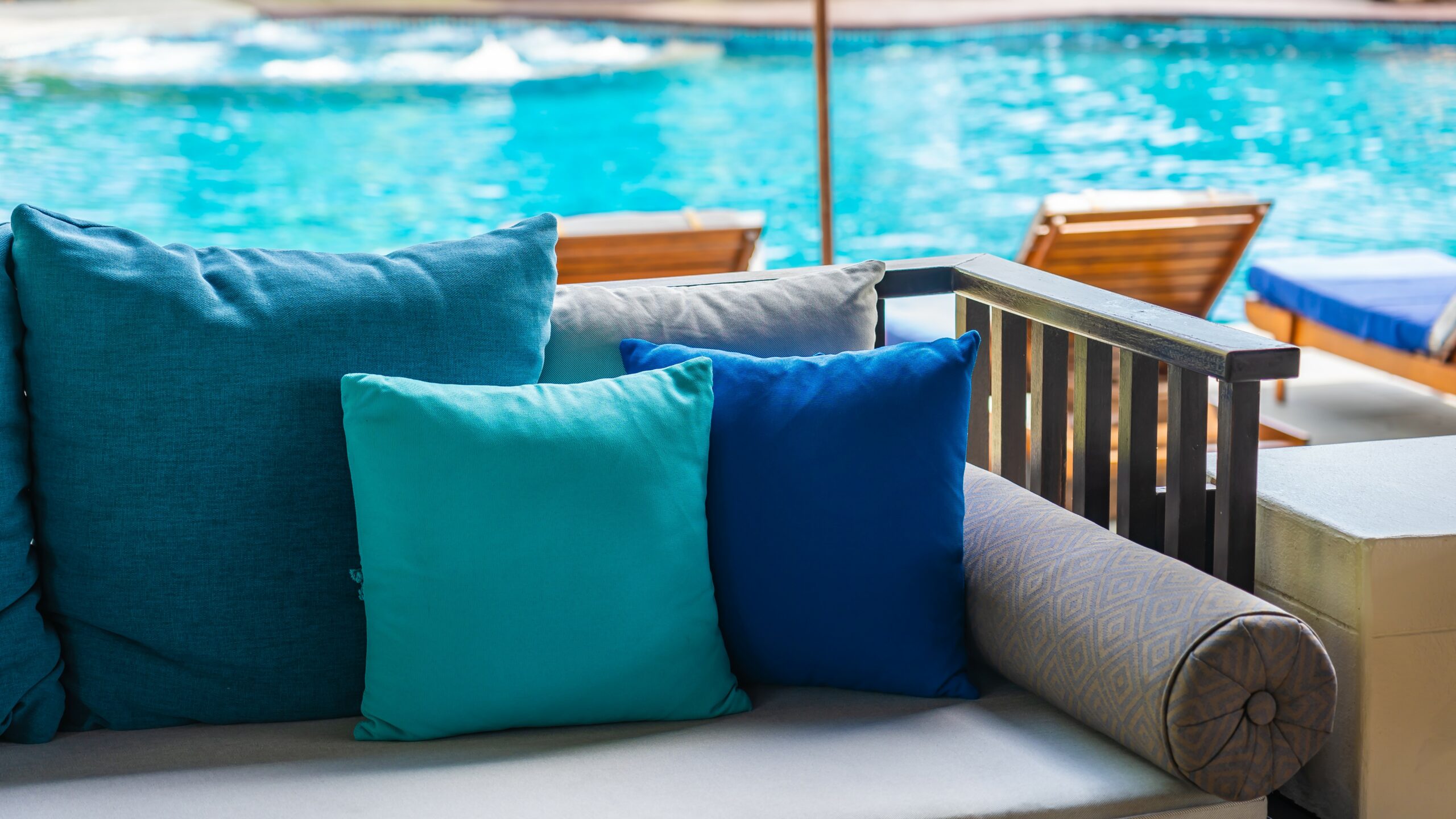
Cushions and Fabric
When choosing the best cushions and fabric for your Florida home’s outdoor furniture, we have two tips worth keeping in mind. Florida’s blazing sun can cause cushions and fabric to fade quickly. So stick with a light color palate that will last, like a white, cream, light gray, and pale blue.
Most importantly, choose a high-quality, durable outdoor furniture fabric to protect your cushions against Florida’s harsh weather conditions. The best outdoor synthetic materials include acrylic, olefin, polyester, and Textilene fabric.
Final Thoughts
Now that you know which materials are best for outdoor furniture in Florida, the final choice is yours. Synthetic resin wicker and composite wood furniture are ideal if you’re looking for something chic, lightweight, and low maintenance.
Teak is the best natural wood furniture for outdoors, whereas cast aluminum is a go-to for someone looking for a modern metal option. Stainless steel is a perfect option for heavier furniture pieces. (Related article: Patio Furniture For Small Outdoor Spaces)

